Geykhera blood-red: description, varieties, recommendations for cultivation
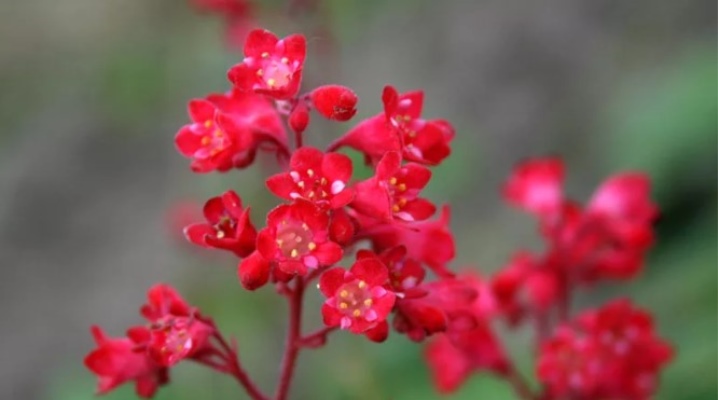
The ornamental Heuchera plant will decorate any garden with its beauty. The culture can be planted in curbs, mixborders, rockeries and alpine slides. The varieties of blood-red geychera are especially aesthetically pleasing.

Botanical description
Blood-red Heuchera is a perennial culture of the saxifrage family. It is used to breed new varieties. In its natural environment, the plant prefers to grow in stony and damp areas in the southwestern regions of North America. Due to its excellent frost resistance, this species is well suited for cultivation in Russia.
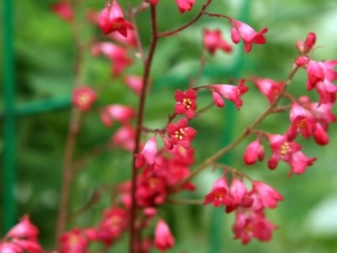

In the process of growth, the culture forms a rosette of leaves with a massive dense rhizome without distinct stems. The leaves are reniform-rounded, fleecy, serrated, with many branched veins, the rosette they form grows in length of 20-25 cm. Depending on the variety, the leaves can be colored in any shade, but often there is a purple tint.
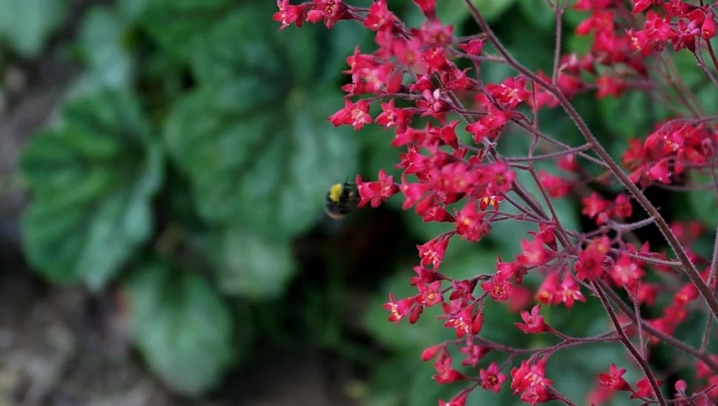
The flowers are miniature, can be red, crimson or dark pink in color. They have short petals and a 5-part calyx, formed into dense panicles on long, stable peduncles. The fruits are considered to be capsules, which contain small dark brown grains.
The flowering of the species begins in June-August and lasts for 2-3 months. The plant is appreciated by breeders for the possibility of obtaining new varieties that differ in color, length and shape of inflorescences.
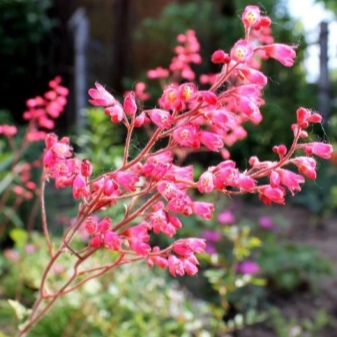
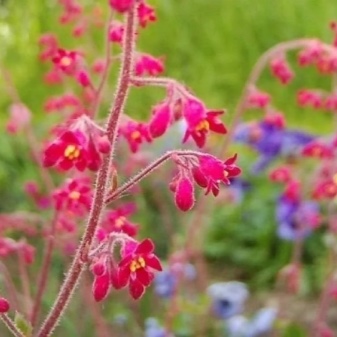
Varieties
When choosing planting material, take a look at the most popular varieties of blood-red geychera.
- Coral forest. The decorative appearance is achieved by beautiful green leaves with marble veins. In summer, on strong peduncles up to 30 cm high, bright coral small flowers are formed, which harmoniously contrast with the color of the green mass.
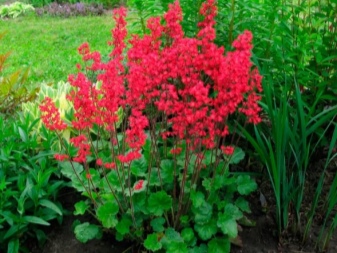
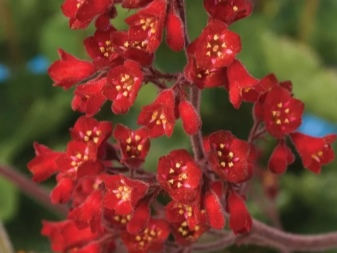
- Slendens. It is a large specimen, reaching a height of 50 cm. Carmine-red flowers beautifully emphasize the green foliage. The flowers are formed into small inflorescences. Bloom lasts from July to August.
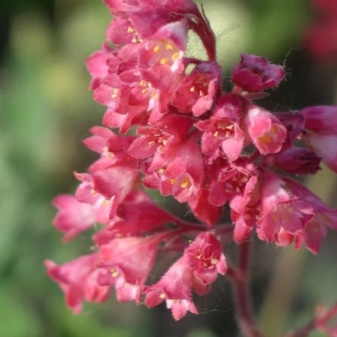
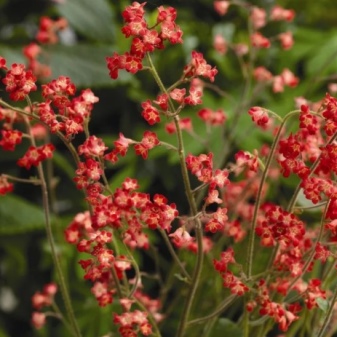
- Leichtkafer. This variety is characterized by small flowers with a glossy scarlet surface. The height of the specimen is up to 40 cm.
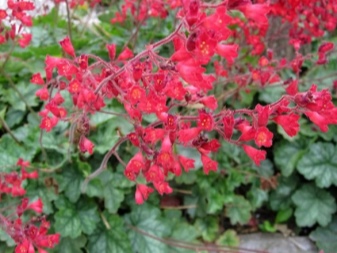
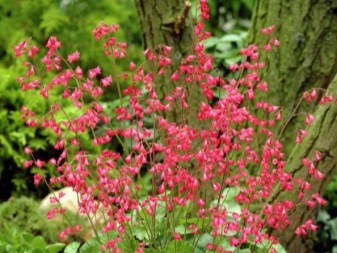
- Ruby Bells. A plant with peduncles up to 40 cm and aesthetic jagged leaves, decorated with a marble pattern. The miniature bell-shaped flowers are bright red in color and are collected in neat inflorescences.

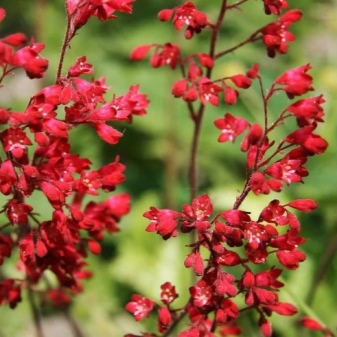
Landing
This species does not tolerate soil, which contains a lot of acid. To get rid of its excess, you can introduce lime into the soil or plant siderates. The plant will feel comfortable in a well-dug and nutritious soil that allows air and moisture to pass through with high quality. If an area with dense soil is selected for planting, then it is necessary to organize a drainage system.
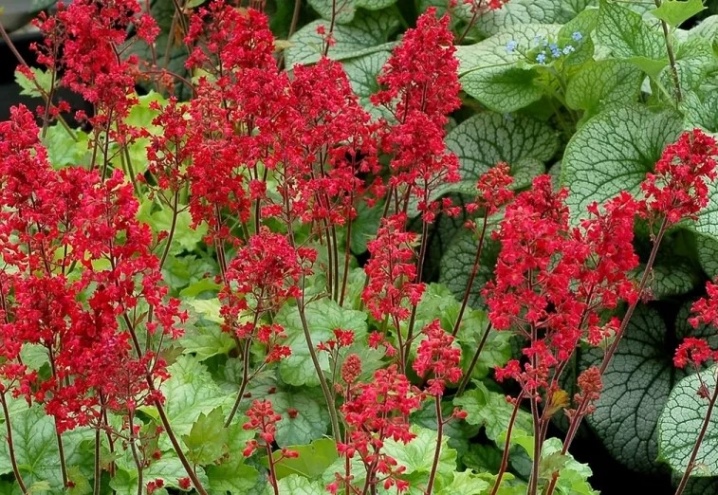
The culture develops well in open sunny areas, it is drought-resistant, but it is quite vulnerable to direct sunlight. That's why the planting site should be light, but with a slight shade in the hot afternoon. For example, a plot on the east or west side of the garden is suitable.
It is better not to plant a plant on a shaded flower bed, since in the shade it will lose its decorative effect and bright color.
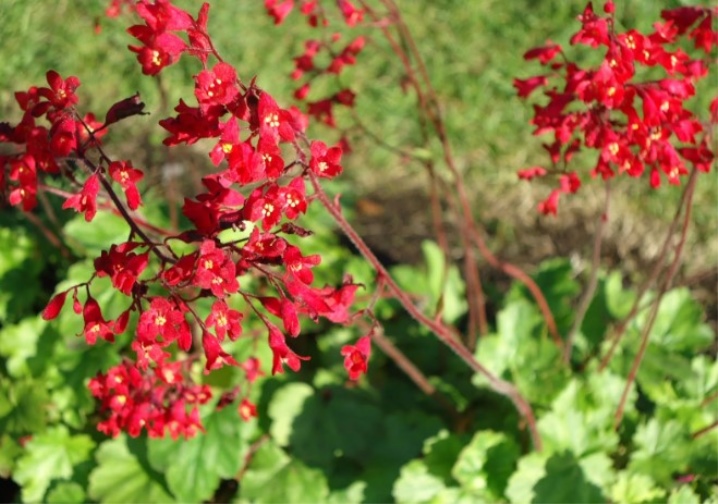
The planting process consists of the following steps:
- dig a planting hole with a depth and diameter of 30 cm;
- equip the drainage system if necessary;
- put a layer of dressings and ash on the bottom;
- place the planting material in the resulting substrate;
- cover the free space with a mixture of earth and sand;
- moisten the planting site.

Care
When growing a crop pay special attention to a few important points.
- Watering. This procedure is carried out a maximum of once a week. The plant is watered in a moderate amount, avoiding stagnation of moisture, otherwise the roots will begin to rot.
- Fertilizers. Occasionally, the culture can be fed with mineral mixtures, halving the dose recommended on the package. Overfeeding can trigger disease. In the first years, the plant absorbs additional nutrition from the soil, and therefore does not need fertilizers. And also it is not allowed to introduce organic matter - it will lead to decay of the roots.
- Pruning. In the spring, a sanitary haircut is carried out, during which all damaged, dry and frozen branches are eliminated. It is better not to carry out autumn pruning, as the procedure will reduce the winter hardiness of the species. After pruning, it is advisable to lay out a layer of mulch, such as peat, humus or river sand.
- Preparing for winter. An adult specimen will easily survive the winter without additional protection. However, a young seedling or a plant planted in a harsh climate is best covered for the winter with spruce branches or fallen leaves.
- Diseases and pests. Most often, the culture is attacked by nematodes, slugs, weevils, snails. Insecticides are used to control insects. Sometimes the plant becomes a victim of such ailments as powdery mildew or gray rot. These diseases occur with excess moisture. The affected bush is removed from the ground, the damaged roots are cut off, treated with a fungicide and transplanted to a new place. In general, the culture has a fairly high immunity to diseases and pests.
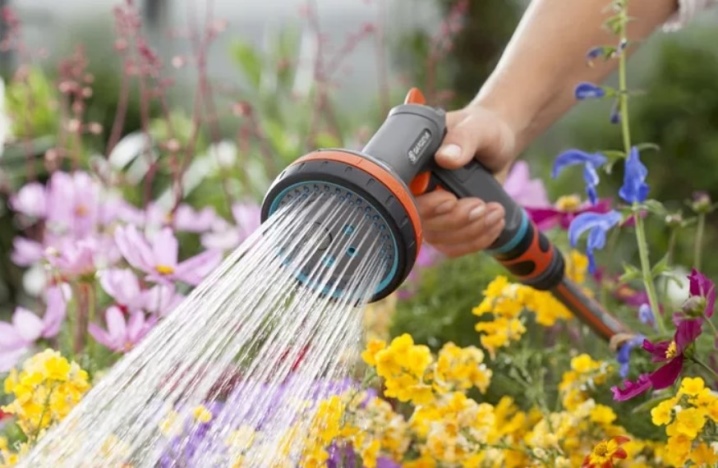
Reproduction
Breeding heuchera by germinating a leaf in water is not practiced, but it is possible to propagate the plant in other ways:
- seeds;

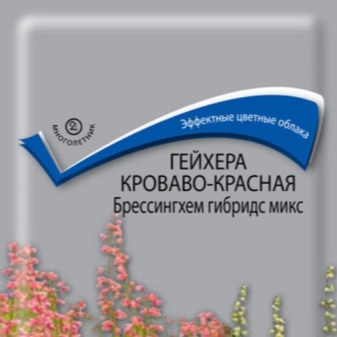
- cuttings;
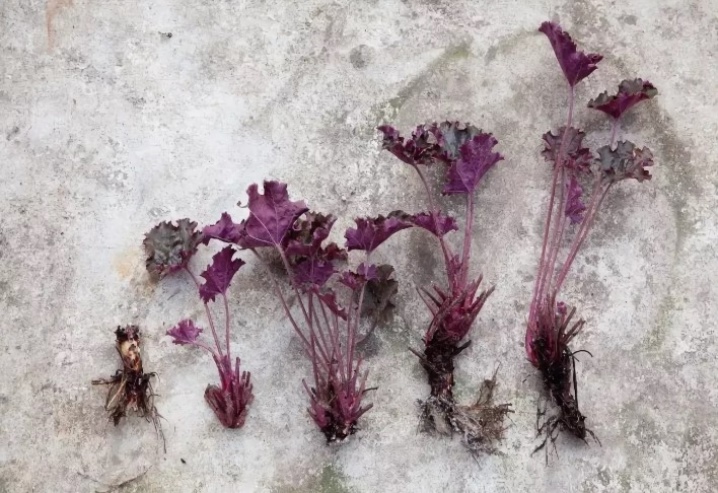
- dividing the bush.
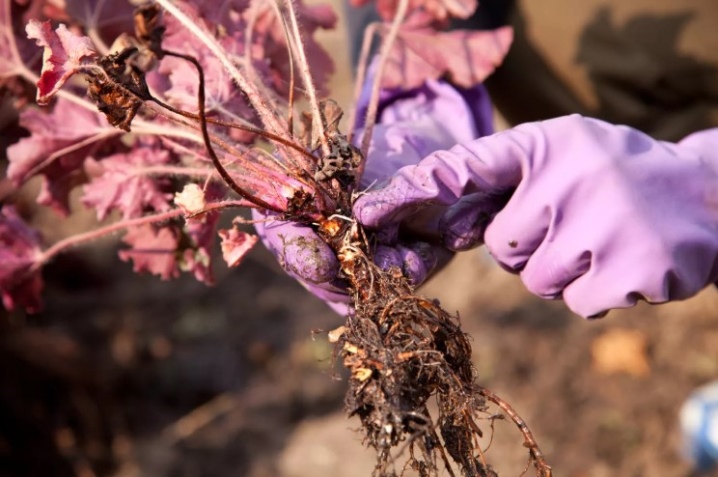
The seed method is quite promising, but it has a drawback, namely: the absence of beautiful inflorescences and low decorative foliage. The seeds retain the ability to germinate for 1.5 years. Sowing is carried out in the spring, while the seeds are not deepened, but evenly distributed over the surface of the earth. Next, the container is left in a bright, windless place under a film or glass. The first shoots can be observed in 2-3 weeks. When three leaves appear, the seedlings dive, leaving 4-6 cm between the plants.
The grafting method involves cutting rosettes, removing part of the leaves and treating the root with a stimulating solution. The planted cuttings are covered with polyethylene, regularly ventilated and moistened, and after a month they are planted in a permanent place.
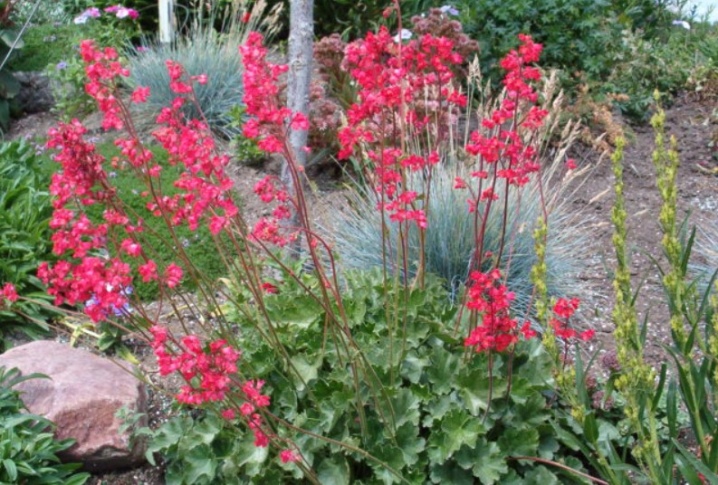
The method of reproduction by dividing the bush is carried out in May or August. First, the bush must be well watered, then carefully removed from the ground, the root system is divided into parts with a knife, and all parts must be planted in a permanent place.
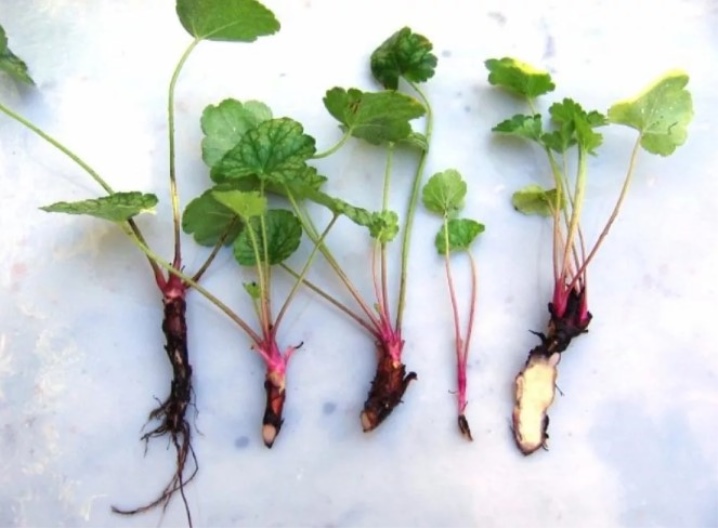
You can learn how to propagate heuchera by dividing the bush and cuttings from the video below.







































































































The comment was sent successfully.